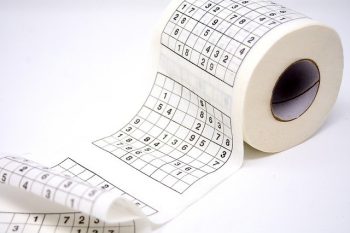Staying Curious in Times of Need Posted by Bjørn A. Bojesen on Mar 18, 2020 in Norway and the world
Dette er en veldig vanskelig tid for mange mennesker. (This is a very hard time for many people.) Men livet må fortsette! (But life must go on!) Kanskje du kan bruke noe av ventetida på å lære norsk? (Maybe you can spend some of the waiting time on learning Norwegian?) Here are some useful expressions to help you and your loved ones stay safe and move forward towards brighter days.
Viruset [VEERooset] (the virus) currently spreading fra person [pareSOHN] til person throughout the world is called korona by most Norwegians. (Yes, that little bastard’s nickname – which means crown in Latin – has been slightly norwegianised with a k instead of a c. Similarly, a place where people go to drink coffee is called a kafé and not a ”café”.)
As far as I understand, koronavirus spreads through those small dråper (drops) that come flying through the air whenever you nyser (sneeze), hoster (cough) or even snakker (talk). That’s why it’s so important å holde avstand (to keep a distance) of 1-2m. Also, those tiny drops may easily get onto your hender (hands), and into your øyne/nese/munn (eyes/nose/mouth) when you accidentally touch your face. Which is why it is veldig viktig (very important) to avoid handshakes, and keeping your hands and your belongings clean. (Sigh, you can’t even share a klem – hug… 🙁 )
Last week, the Norwegian PM Erna Solberg and her regjering [reYERing] introduced tough measures to try to slow down smitten (the infection), appealing to Norwegians’ sense of dugnad [doog-nahd] (”collective co-working”). As in many other land (countries), places where folk (people) normally get together have been shut, and people are asked to stay hjemme [yemmeh] (home) as much as possible. There’s a strict border control, and persons who’ve recently been abroad are asked to gå i karantene (go into quarantine). Everything, of course, is done to prevent people getting smittet (infected) – especially eldre og kronisk syke (old people and chronically ill people), who might not survive den nye sykdommen (the new disease). Also, the staffs at sykehusene (the hospitals) can only take care of a limited number of pasienter (patients) at a time.
A friend of mine lives with his little family on a Norwegian island not yet reached by the virus. In case they do go to the mainland and return, they’ll have to self-quarantine for 14 days. So, they’re stuck in their home and surrounding nature. Many, many Norwegians face similar situations. Folk bekymrer seg (people worry) and especially barna kjeder seg (the children are getting bored) uten skole og barnehage (without school and kindergarten). Everywhere, people are doing their best to be creative with home-schooling, online meetings and other digital solutions. 🙂
Here are some of the tips of the Norwegian Health Authority to save lives:
• sneeze only into a papirlommetørkle (paper handkerchief) or albukroken (the elbow pit)
• vask hendene ofte og grundig (wash your hands often and thoroughly)
• alternatively, use hånddesinfeksjon (hand sanitisers)
I wish all our readers health and happiness, and a quick recovery to those who might be reading this while ill! 🙂 Language learning, as everything else, must go on. God bedring! (Hope you’ll all be better soon!)

Build vocabulary, practice pronunciation, and more with Transparent Language Online. Available anytime, anywhere, on any device.





Comments:
martin:
Good way of introducing selective Norwegian words in an important topic.
Janet Oakley:
I stumbled across your language blog as I write about Norway in WWII and one of the components is the deaf in Norway, especially Conrad Bonnevie-Svendsen, one of my heroes. I wanted to respond to your blog on sign language. My main character is pretending to be deaf. I read a lot about deaf culture in general and Norway in particular. The character can sign. I got a chance as a substitute reading teacher at our deaf school in our public school to learn some basic signs. I’m continuing to learn. Two years ago I was in Trondheim and went to the deaf museum which was the deaf school in my novel. I’ll continue come here. I’m learning Norwegian and continue to research and write about Norway in WWII and after. Great blog.
Bjørn A. Bojesen:
@Janet Oakley Hi @Janet Oakley, the novel you’re writing sounds really interesting! 🙂 I know nothing about sing language and very little about Norway during WW2, but I’m sure other readers can help, if need be. Good luck with learning Norwegian, and with your writing! And thank you for the feedback; that always helps a lot.